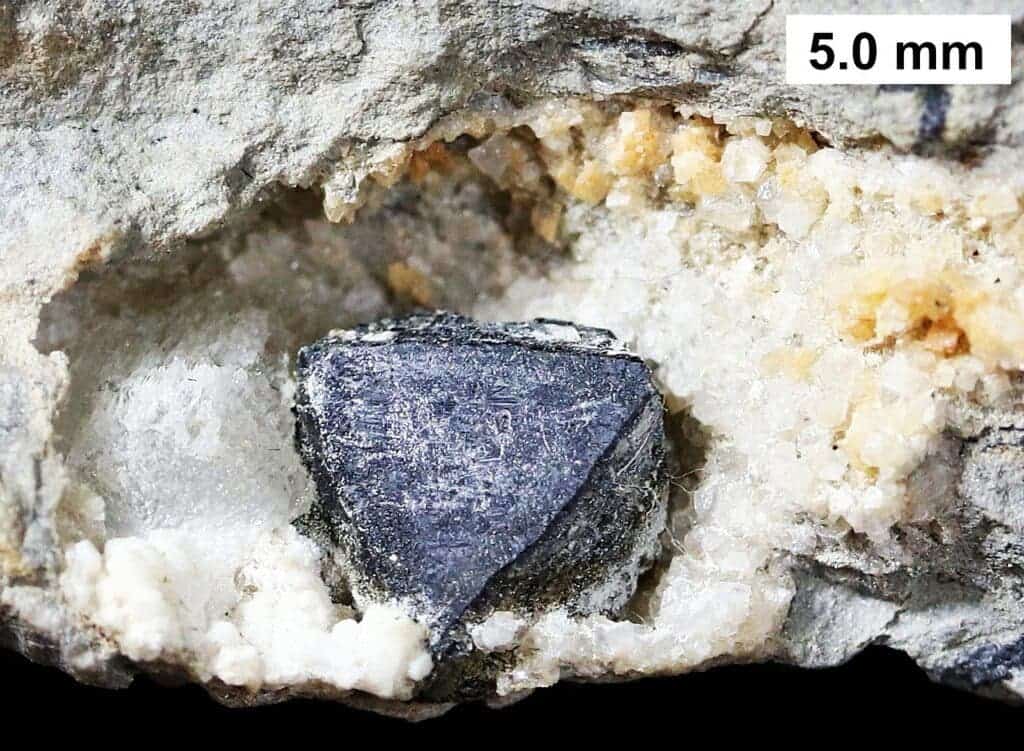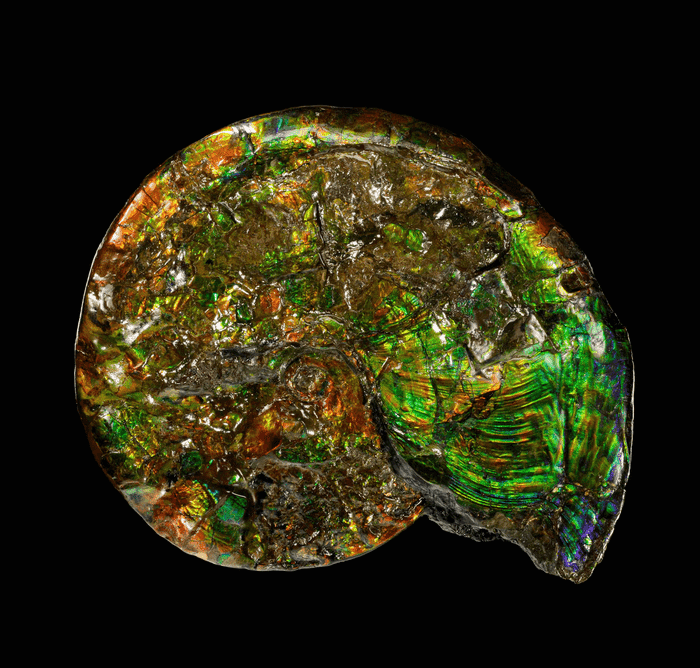
Nature has many different ways to create minerals. It crushes them, boils them, mixes them together, and degrades them. There are thousands of naturally occurring minerals on Earth and yet, according to a new study, all of them are created with 57 recipes. Furthermore, four in five minerals were formed with the help of water, and about half involved biology (either directly or indirectly).
This work fundamentally changes our view of the diversity of minerals on the planet. There are some 6,000 minerals currently recognized, but sometimes, the same mineral can be formed through different processes. When the way minerals form is factored in, the number of “mineral kinds” (a newly-coined term) totals more than 10,500; in fact, 40% of the Earth’s minerals can be formed in more than one way. In addition, some of the findings are truly surprising, the researchers say.
“I hadn’t fully realized the overwhelming importance of the global water cycle in promoting mineral diversity. That explains a lot about why Earth has so many more kinds of minerals than other planets and moons in our solar system,” says Robert Hazen, American mineralogist and astrobiologist. Discussing the study in an email, he said several findings were surprising. “The important role of biology in mineral diversity is also underscored by our findings. “
“The disproportionate role of extremely rare chemical elements, which are essential to 42% of all known minerals, was completely unexpected, and it says something profound about the importance of rare, different individuals.”
“Each mineral specimen has a history. Each tells a story. Each is a time capsule that reveals Earth’s past as nothing else can,” the researcher adds.

The study was 15 years in the works, but it wouldn’t have been possible without the long period of pandemic lockdown, in which researchers couldn’t work on much else.
“The data assembly and analyses were all done remotely, much of that helped by large mineral databases and online access to tens of thousands of relevant publications,” Hazen tells ZME Science.
The study details the origins and diversity of every known mineral on Earth, which can help us find new ways to look for mineral resources, as well as better understand the minerals on other planets and moons, says Hazen. Most impressively, the incredibly useful collection has been made available to other researchers, some of which are already using it to produce the research — without needing expensive machinery and fieldwork.
“One of the most satisfying aspects of this work is the extent to which it democratizes mineral science. Traditional mineralogy involves using large, expensive analytical machines to tease out the structures, compositions, and properties of smaller and smaller samples. Our work, by contrast, relies on the vast published literature of more than a century, which has never been compiled into open-access data resources. Now, those data can be used by anyone with a laptop and access to the internet. Consequently, we have young scientists contact us from around the world to do forefront science without the million-dollar machines.”
“A number of researchers are already using the database we constructed to study aspects of mineral diversity and distribution through Earth history. For example, do minerals on average show an increase in complexity through time? Does formation by water, or heat, or life lead to sets of minerals with different characteristics? Is the distribution of minerals at a global scale a possible biosignature?”
The study also tells us something very profound about the role of biology and its intricate connection to the planet’s geology. Over 1,000 minerals couldn’t have formed without biology, whether it’s the shells or bones of animals, or microbes doing their chemistry magic. Biology also affected the atmosphere, which helps change the chemistry and structure of many minerals on the surface.
So instead of thinking of biology and geology as two separate entities, perhaps we should start thinking of them as a joint system.

The study also found interesting things about some minerals. For instance, pyrite, commonly called “fool’s gold”, was found to be a champion of diverse origins. It can form in no fewer than 21 ways, at high and low temperatures, with or without water, with or without microbes, and in a variety of environments. It may not be gold, but pyrite is just as interesting.
Meanwhile, at the other end of the spectrum, 59% of the Earth’s minerals were formed through only one process. Just 8% of the minerals were formed through four or more processes. Diamonds, for example, have originated in at least nine ways, being possibly formed from condensation in the atmosphere of old stars, meteorite impact, or from hot ultra-high-pressure deep within the Earth.
So if you consider its origin, not all pyrite is the same pyrite — and the same can be said about plenty of other minerals. Herein lies the new way to look at minerals, and the researchers are not nearly finished. Several other programs are in the works, aiming to organize minerals in a new framework.
“This study is just the beginning of an entirely new way to think about minerals and their classification. We have two major, multi-year efforts underway. The first is to complete a massive “Evolutionary System of Mineralogy,” which is the detailed organization of all known minerals into a new framework. The effort is being published in 12 large papers (7 down, 5 to go), to be followed by a book-length collation. The second effort, led by Shaunna Morrison, is the development and application of “mineral informatics,” which is an approach that embraces the information-rich aspect of mineral specimens. Every mineral is a time capsule waiting to be opened,” the scientist said.
The findings are significant not just for minerals on Earth, but could also help us understand other planets, Hazen adds.
“What mineral-forming environments occur on the Moon, Mars, and other terrestrial worlds? If Mars had (or still has) a hydrological cycle, what mineralogical manifestations might we expect? For example, are there Martian hydrothermal sulfide deposits and, if so, were a variety of metals mobilized? On the other hand, if the Moon is truly dry, then what paragenetic processes are excluded? And do extraterrestrial bodies display paragenetic processes not seen on Earth, such as cryo-volcanism on Titan?”
The finding isn’t significant only for researchers, it could also be important from an education perspective, the researchers conclude.
“What’s more, this new way of thinking about minerals through deep time, what is called “mineral evolution,” has become a valuable way to teach mineralogy and to present it to the public. Many museums, including the American Museum in NYC, natural history museums in Vienna, Paris, Milan, Edinburgh, Harvard, Tucson, and more, have reorganized exhibits to place minerals in their historical contexts. When I was a child, 60 years ago, I would go into the old Morgan Hall of Gems and Minerals at the American Museum and study their minerals, which were arranged by composition and structure, with no hint about their ages or contexts. The new American Museum of Natural History mineral hall, which opened less than a year ago, is based on our new model. That is thrilling to me,” Hazen concludes.
A few other interesting takeaways from the study:
- The oldest minerals were dated to 7 billion years ago, billions of years before our solar system formed. They came from meteorites.
- 97 minerals are only known from meteorites.
- 72 minerals were formed directly due to the urine or fecal matter of birds and bats.
- The oldest mineral on Earth is 4.4 billion years old (zircon crystal).
- 41 rare elements are involved in the formation of 2,400 minerals.
- 296 minerals are thought to predate Earth itself.
- 600 minerals were created by human activity, including mining and coal mine fires.
Journal References: “On the paragenetic modes of minerals: A mineral evolution perspective,” and “Lumping and splitting: toward a classification of mineral natural kinds.”






